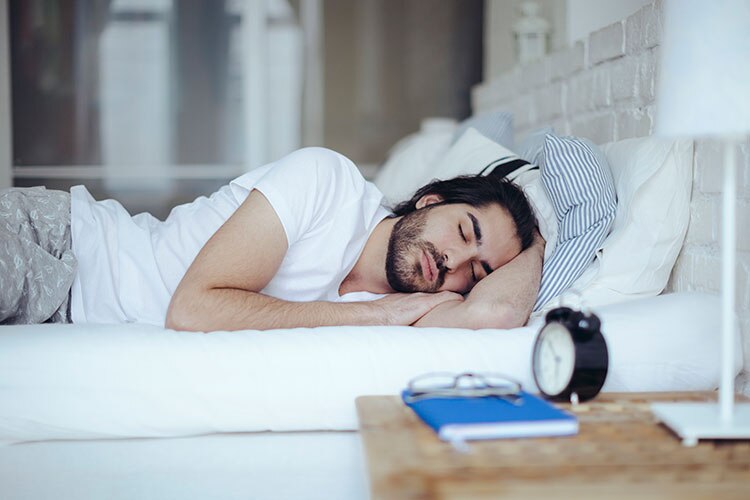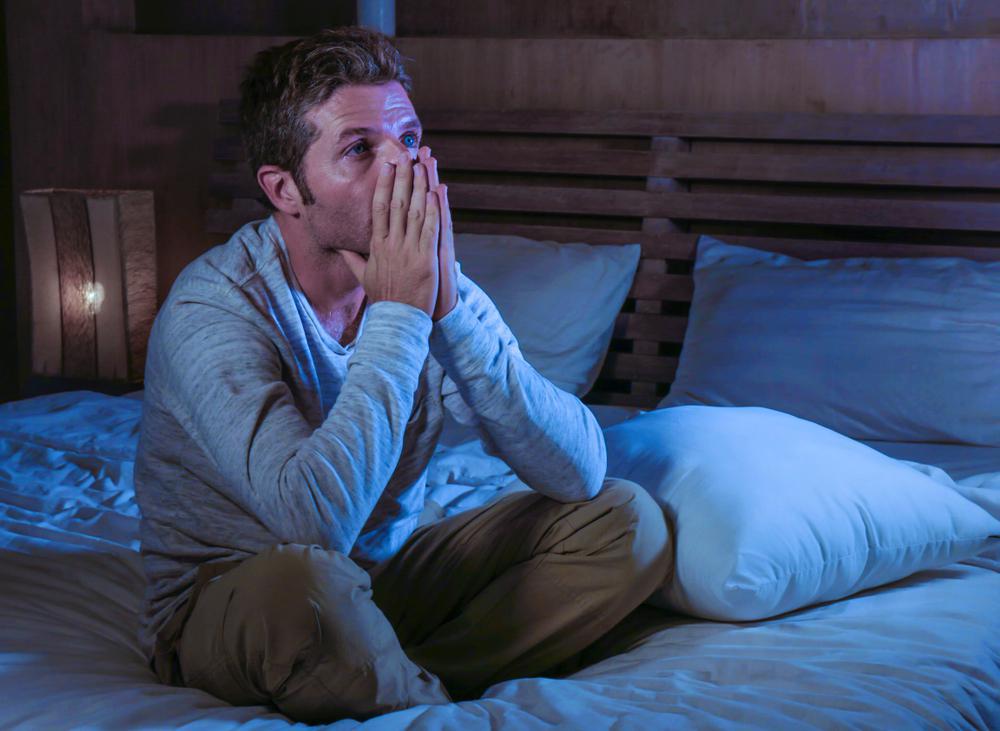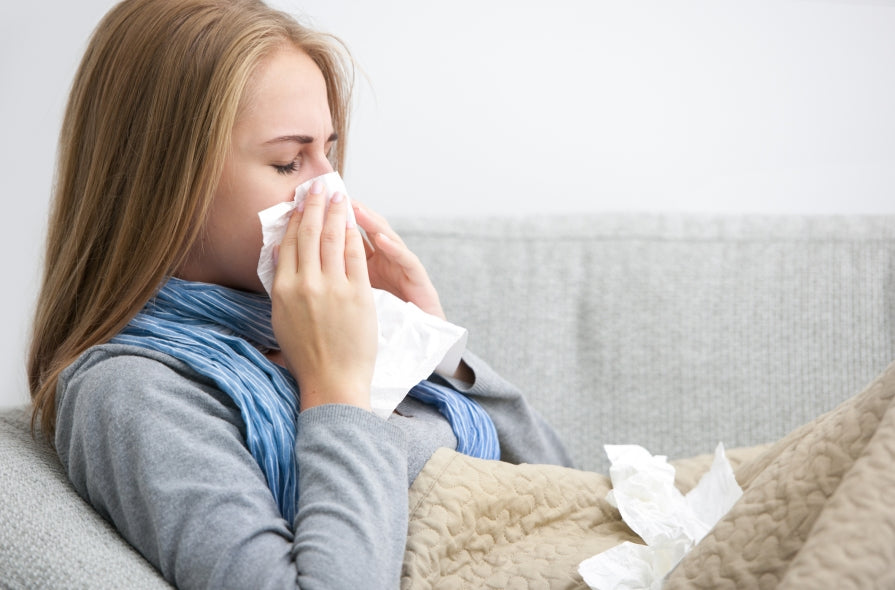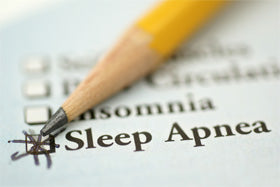News
Is Remote Working Affecting Your Sleep?
wp:paragraph Once the Covid-19 pandemic hit back in early 2020, many office employees found themselves all of a sudden having to work from home. While the remote working life certainly has its convenience and comforts, let’s not forget the many challenges it presents, such as navigating Zoom meetings and other new technologies as well as a bit of a setback in healthy habits including diet, exercise and yes, sleep. /wp:paragraph wp:paragraph Why remote workers are known to struggle with sleep /wp:paragraph wp:paragraph According to a recent study done by the CDC, many adults who work remotely as a result of the pandemic have not been getting the recommended amount of sleep at night, and a few have reported experiencing insomnia as well. This can cause you to feel tired during the daytime when you need to be alert and productive. Having both your personal and professional life co-exist in the same space can be tricky, and you may find yourself having work on your mind as you go to bed a little more than usual. /wp:paragraph wp:paragraph Many workers have reported working much later hours at home than they typically would at the office, and proper bedtime habits have taken a bit of a backseat. In addition, too much time on your phone or computer at night can interfere with your REM sleep cycle, causing insomnia and other sleep ailments. You may also find yourself making more frequent trips to the kitchen throughout the day to grab a snack or a cup of coffee but overdoing this can also affect how you sleep at night. /wp:paragraph wp:paragraph A few tips for getting the best sleep while working from home /wp:paragraph wp:list Try not to use your bedroom as an office. Set a designated workspace in your home that is separate from where you sleep. More importantly, don’t work from your bed! Try to stick to as close to a normal workday routine as you can, even at home: shower and get dressed in the morning, eat a proper breakfast, take a proper break for lunch and stop working for the day once the working hours have ended. Resist the urge to check work emails and complete work projects in the evenings, or anytime outside of the working hours. Go to bed at the same time every night, and get at least 8 hours of sleep per night, just like you would if you had to commute to an office the following day. Be sure to practice proper sleep hygiene too, including limiting technology devices before bed and sticking to a proper bedtime routine. /wp:list
about Is Remote Working Affecting Your Sleep?How Stress Affects your Sleep
wp:paragraph It is no secret that most of us have experienced stress in one way or another, especially these days seeing as we are still in the middle of a global health pandemic. Stress is something that can influence the body in so many ways, including how you sleep. If you have ever found yourself tossing and turning in the middle of the night and you cannot seem to fall asleep, you are not alone. /wp:paragraph wp:paragraph How to tell if stress is causing your poor sleep /wp:paragraph wp:paragraph First, getting poor sleep at night can have a significant effect on how you function during the daytime. If you are finding yourself having low energy, trouble concentrating, and you are in a negative mood, then your sleep may be to blame. /wp:paragraph wp:paragraph Sleepless nights do happen to all of us every now and then, however it becomes a concern when this happens many nights in a row and if affects how you function in the daytime. /wp:paragraph wp:paragraph With everything going on in the world these days, it is easy to have a lot on your mind when it is time to go to bed, but do not let this take a toll on your sleep routine. If this is not addressed and dealt with, this can lead to more significant health conditions. /wp:paragraph wp:paragraph How to reduce stress levels to improve your sleep /wp:paragraph wp:paragraph Whether your stress is caused by the current events in the world, or factors in your personal life such as work or relationships, it is important to identify the source of the stress and try to address it. While it may seem challenging and it may be difficult to resolve, knowing what is causing your stress can be important to helping you sleep better. /wp:paragraph wp:paragraph There are few other healthy habits to incorporate in the daytime that can help you sleep better at night: /wp:paragraph wp:list Limit the time you spend on electronic devices Get in some exercise during the daytime Stick to eating a healthy diet Limit your caffeine and alcohol intake Practice some mindful meditation techniques before bedtime Seek support from family or friends Speak to your doctor if you have exhausted all your other options to no avail /wp:list
about How Stress Affects your SleepSleep and Seasonal Allergies
wp:paragraph If you are starting to wake up feeling a little stuffed up these days, you are not alone. Allergies are extremely common in the early spring months and this can greatly affect your sleep cycle. /wp:paragraph wp:paragraph Why are my allergies affecting how I sleep at night? /wp:paragraph wp:paragraph Many people experience seasonal allergies and/or flu like symptoms at this time of year thanks to significant changes in air pressure and the weather. This can affect your sleeping patterns in a big way, especially if you have sleep apnea and/or use a CPAP machine at night. Some people experience common cold symptoms such as headaches, sinus congestion or sore throat, that most often occurs in the morning, right as you wake up. Others (especially those with sleep apnea) may have a lot of nasal congestion at night that is making it difficult to sleep and causing insomnia. /wp:paragraph wp:paragraph With all of that said, having an “off” sleeping night for one night or more can affect how you function during the daytime and doing nothing will only make it worse. /wp:paragraph wp:paragraph How can I sleep better with allergies? /wp:paragraph wp:paragraph Dealing with seasonal allergies that affect your sleep can be unpleasant, however there are ways to help you to alleviate this: /wp:paragraph wp:list Try taking an over-the-counter antihistamine (such as Benadryl or Claritin) before you go to bed to help you sleep better. If you wake up with allergy symptoms then you can take one in the morning as well if needed (just be sure to use a non-drowsy formula!) Don’t stray away from practicing good sleep hygiene. Stick to the same bedtime every night and stick to healthy diet and exercise routines during the daytime. Keep your bedroom cool and use a humidifier if necessary to help alleviate excessive dryness in the air. Check out this HumidX F20 humidifier - PAPSmart Canada If you use a CPAP machine, don’t skip the use of your machine for one night, even if you are feeling unwell. It is more important now than ever to keep up with your CPAP therapy. You may even want to consider giving your machine an extra cleaning to better help you sleep at night Be sure to seek advice from your doctor if the problem persists. /wp:list
about Sleep and Seasonal AllergiesGetting ready for 2016: New Year’s Resolution tips for CPAP Users
wp:paragraph Happy 2016! The New Year signifies a fresh start and a new beginning for many people. Some try to exercise more and eat better, others simply strive to be more open minded in their lives. If you use a CPAP machine, the New Year can also be a perfect time to step it up in terms of your parts replacement schedule, or improving your overall sleep habits. /wp:paragraph wp:image {"id":3665,"sizeSlug":"large"} /wp:image wp:paragraph As big as New Year’s Resolutions are for making improvements for people, prioritizing sleep is incredibly important to your overall health, especially for those who use a CPAP machine. Not only does this improve your experience using the machine, but getting a good night of sleep also affects how you function during the daytime. So the start of the New Year is the perfect time to take advantage of making positive changes to your overall sleep health. /wp:paragraph wp:paragraph Here are some tips for CPAP users to consider for the New Year: /wp:paragraph wp:list Has your bed time fluctuated over the holidays? This happens to a lot of people over the holidays with many late nights. It is best to go to bed at the same time each night, and wake up at the same time each day (or at least very close to it) Take some time to sit down and set your parts replacement schedule for the year. In order to keep your CPAP machine and its parts in perfect working condition, they will need to be replaced or upgraded on a regular basis. This is a good opportunity to take inventory of what you have, and what you may need in the coming future, so you can budget it in too (as it’s no secret that some important CPAP parts can break the bank). Avoid having heavy meals close to bedtime, and avoid drinking caffeinated beverages too late in the daytime. Avoid the use of electronic devices too close to bedtime (yes that includes the TV) If you aren’t doing so already, be sure to make a habit of cleaning your machine and its parts on a regular basis (at least once a week) Practice good diet and exercise. Even though many people may already have this as their New Years resolution, this can work wonders in helping you to sleep better at night /wp:list
about Getting ready for 2016: New Year’s Resolution tips for CPAP UsersTime change adjustment tips for CPAP users
This past weekend, many of us enjoyed an extra hour of sleep thanks to the Daylight Savings time change that occurred. As nice as that hour of sleep may have been, many of you may admit to having a bit of trouble sleeping at night, not just because of the time change itself, but because of how your internal body clock is programmed. When you use a CPAP mask at night, routine is so important for ensuring that the therapy works properly and you get a good night’s sleep. The “fall back” time change can affect your circadian rhythm, the part of your brain that reacts to light patterns in the day and night. And as great as it may have felt to sleep in for that extra hour, many of you may admit to your sleeping patterns being a bit haywire right now. Common symptoms of this include: increased headaches, lack of focus throughout the day, feelings of loneliness or depression, and possible spurts of insomnia throughout the night (and this includes waking up earlier than normal) But fear not: as much of an adjustment this may be, there are ways you can work yourself back into your normal sleep routine and start sleeping normally at night again. Here are a few tips to adjusting to the time change: Regardless of whether you actually feel tired or not, go to bed at your usual time. It may take you a bit longer than normal to fall asleep, but this helps to reprogram your body’s internal clock. Likewise, try and wake up at your usual time each morning. Keep your bedroom cool and dark to help with the bedtime relaxation process Give yourself some time before bed to wind down from your hectic day: turn off the TV and put your electronics away, take some time to read a book, have a cup of herbal tea, practice some deep breathing or do any relaxing activity that helps you sleep better at night Avoid having alcohol, or any caffeinated drinks for a few hours before bedtime Try and get some sunlight exposure when you wake up in the morning (at least for a few days). This helps your internal body clock adjust to the new time. Shop and save on all cpap machines and accessories at Papsmart.com
about Time change adjustment tips for CPAP usersOSA and CSA: do you know the difference?
wp:paragraph We all know by now that the general definition of sleep apnea is when you stop breathing while you sleep. But did you know that sleep apnea actually comes in two different forms? /wp:paragraph wp:paragraph The two main types of sleep apnea are called Obstructive Sleep Apnea (OSA) and Central Sleep Apnea (CSA). While they are both forms of sleep apnea, the cause for the pause in breathing is actually different, and they each have different characteristics associated with them. /wp:paragraph wp:list Obstructive Sleep Apnea (OSA), the most common form of sleep apnea, occurs when your airway gets blocked, either completely or partially, causing you to stop breathing. When breathing resumes, there is often a loud gasp or snort, which can interfere with a deep sleep. It is often overweight, middle-aged men who get sleep apnea, especially this type. The CPAP machine, in addition to other lifestyle changes, is the best form of treatment for OSA. Central Sleep Apnea (CSA) occurs when your brain doesn’t send the proper signals to the muscles that control your breathing. This is different from OSA as there is not a blockage in the airway, but a neurological issue that causes you to stop breathing in your sleep. CSA is often brought on by other medical conditions and it is less common than OSA. /wp:list wp:paragraph The main difference is that with OSA, the effort is made to try and inhale as you stop breathing, yet no air can get into the lungs. With CSA, no effort is made at all by the body to restart your breathing. /wp:paragraph wp:paragraph Experts also acknowledge that it is not uncommon to have both forms of sleep apnea. So this is why it is important to seek help from your doctor if you think you have either form of sleep apnea. /wp:paragraph
about OSA and CSA: do you know the difference?Evolution of Snoring Treatments
wp:paragraph Snoring, or “sleep disordered breathing,” can be quite a nuisance to many people. Many couples end up sleeping in separate rooms, or even splitting up as a result of loud snoring. But the good news is that there are many ways, nowadays, to treat nighttime snoring. Flash back to 30 years ago, and the treatment for snoring was, well, not much at all. /wp:paragraph wp:image {"id":3595,"sizeSlug":"large"} /wp:image wp:paragraph It’s important to remember that just because you snore at night doesn’t mean that you are always going to be a snorer. There are ways to treat it. Medical research has also come a long way in figuring out what causes snoring in the first place. People often assume that they have sleep apnea if they snore, but this is not always the case. Other factors, such as stress, drugs, alcohol or even a common cold can cause you to sound like a bulldozer at night. /wp:paragraph wp:paragraph The most common sleep apnea treatment, CPAP, first came into effect in the 1980’s. This is what a lot of snoring problems end up coming back to. The treatment for sleep apnea is generally a CPAP, or Continuous Positive Airway Pressure mask. This helps to open your airway and keep you breathing all night when you sleep. /wp:paragraph wp:paragraph If your doctor has done the tests and has rules out sleep apnea, they may recommend other treatments to prevent the snoring. Needless to say, if your snoring is caused by a lifestyle factor, then eliminating or changing that factor would be the ideal prevention. /wp:paragraph wp:paragraph If your snoring is something that is recurring, then it’s time to see a doctor and see if anything can be done for you. And be glad that there are ways to solve this! Treating your snoring problem can help you live a happy and productive life and save your relationship too! /wp:paragraph
about Evolution of Snoring TreatmentsFeeling Blue? It may be sleep apnea
It’s no secret that living with undiagnosed sleep apnea can be, well, depressing. But did you know that studies have shown a link between both obstructive sleep apnea and major depressive disorder? For all you sufferers of obstructive sleep apnea, if you find yourself feeling down in the dumps and not yourself during the day, there is a good chance that you may have depression. Believe it or not, depression and sleep apnea actually have a very close relationship. We all know by now that sleep apnea can make a person stop breathing for short periods of time in their sleep. This causes them to feel tired and exhausted the next morning, which can trigger some symptoms of depression. A study done from 2005 to 2008 in the U.S. by Anne Wheaton, PhD, has indicated that the more a person stops breathing in their sleep, the more likely they are to show symptoms of major depressive disorder. And according to an article from the Journal of Clinical Psychiatry, people who suffer from depression also tend to suffer from Obstructive Sleep Apnea. The estimated ratio is approximately 5 to 1 for those with depression who also have sleep apnea, as oppose to those who don’t. While that last statistic may sound alarmingly high, it does not mean that you are doomed for life. Simply seeking medical treatment before it gets worse can help a lot. While research has not yet indicated that treating for depression will help you sleep better, a good start would be to treat the sleep apnea so that you sleep better at night and can have a happier and more productive day. This is why it is important to seek medical treatment if you exhibit symptoms of depression or sleep apnea (or both). As overwhelming as it may be now, treating sleep apnea is something that could also save your life in the long run. Shop at Papsmart.com - The #1 Online CPAP Store. Sleep Apnea Linked to Depression, Study Finds
about Feeling Blue? It may be sleep apneaHistory of CPAP
Can you believe that the CPAP machine is 34 years old? When you look at the original, it’s probably hard to believe that technology has come such a long way. Let’s go all the way back to 1970. Around that time, sleep was not as commonly studied medically as it is today, despite being one of the most important human functions. What we know today as sleep apnea, was known at the time as Pickwickian syndrome (named after a character from Charles Dickens’ The Pickwick Papers who is obese and tends to fall asleep standing up). The only known symptoms for that condition at that time was snoring, and chocking and gasping in your sleep. This was all a big mystery in the medical profession, and not much was known about it. If you had sleep apnea at this period of time, your only hope was for a tracheotomy. In other words, doctors would cut a hole in your trachea and insert a breathing tube to help you sleep better at night. Sounds painful, right? This would all soon change, thanks to an Australian doctor named Colin Sullivan. He had spent many years studying sleep medicine in depth and essentially, changing the way that we look at sleep problems. In 1980, he invented a machine that would end up saving many lives from sleep apnea. This was called the Continuous Positive Airway Pressure machine (or CPAP for short). It is a machine and mask that is worn by people with sleep apnea to help them breathe at night. He invented it by connecting a number of different hoses to a vacuum cleaner and glued it to the snout of a dog. When he saw his first human patient, a construction worker with severe OSA, the results of the mask spoke for itself as the man said he hadn’t felt so well rested in ages. Although it took some time to be accepted in the medical market, the CPAP machine has come a long way, and still continues to save the lives of many people who suffer from sleep apnea. If you are a proud user of this device, you have an Aussie doctor and a vacuum cleaner to thank. Shop at Papsmart.com - The #1 Online CPAP Store. Read ResMed’s historical CPAP reference PDF Learn about the history of CPAP therapy on CPAP.com Read how the first CPAP was invented using a vacuum cleaner — EasyBreathe Learn how a tracheotomy is performed on WikiHow
about History of CPAP





